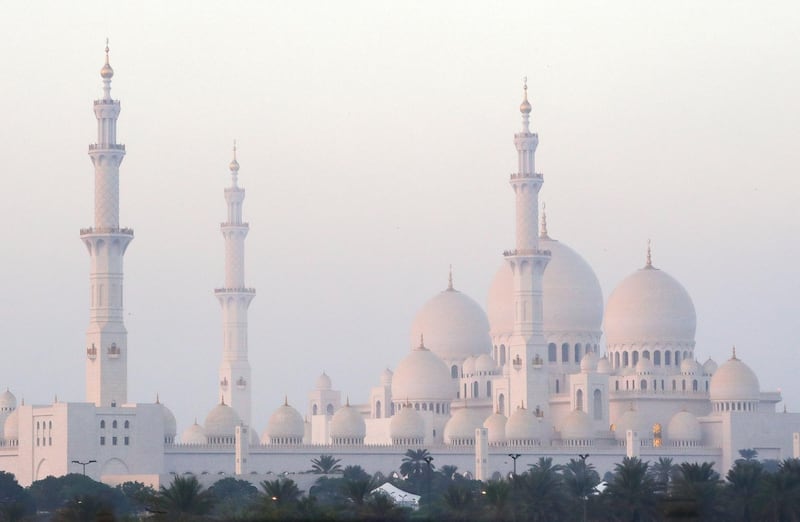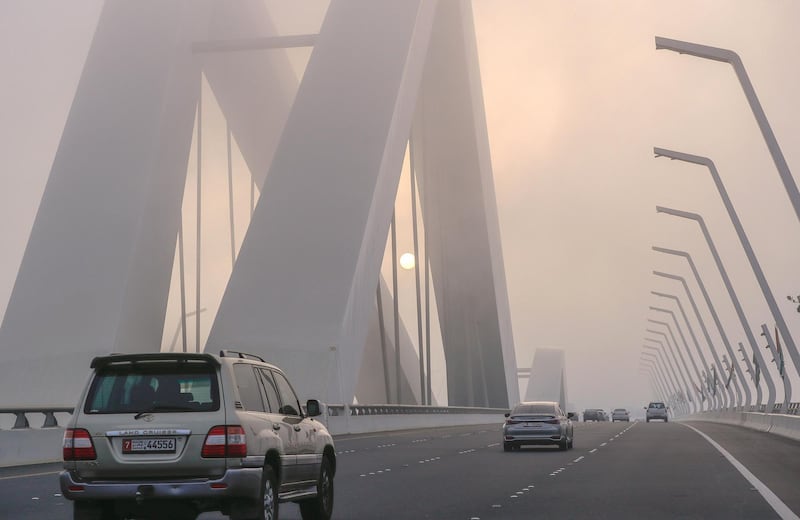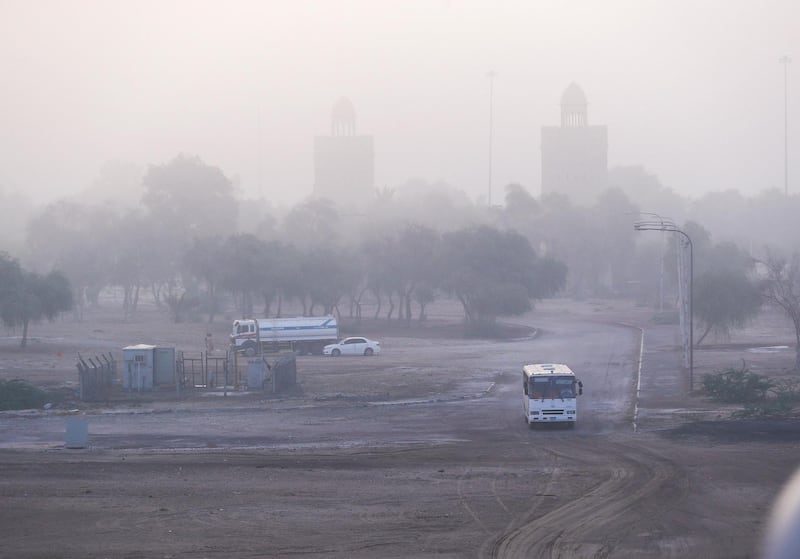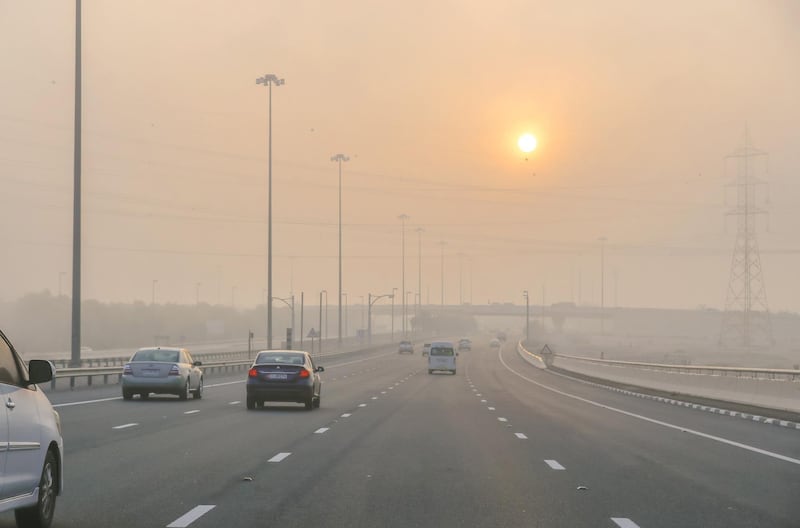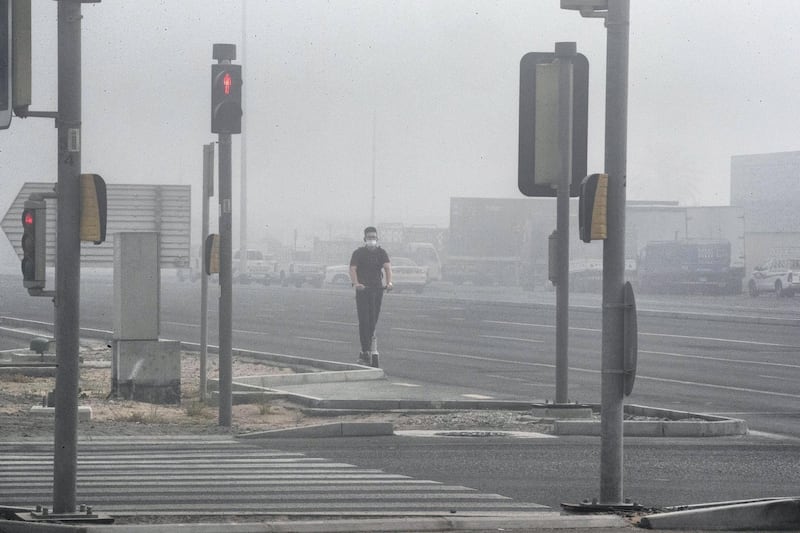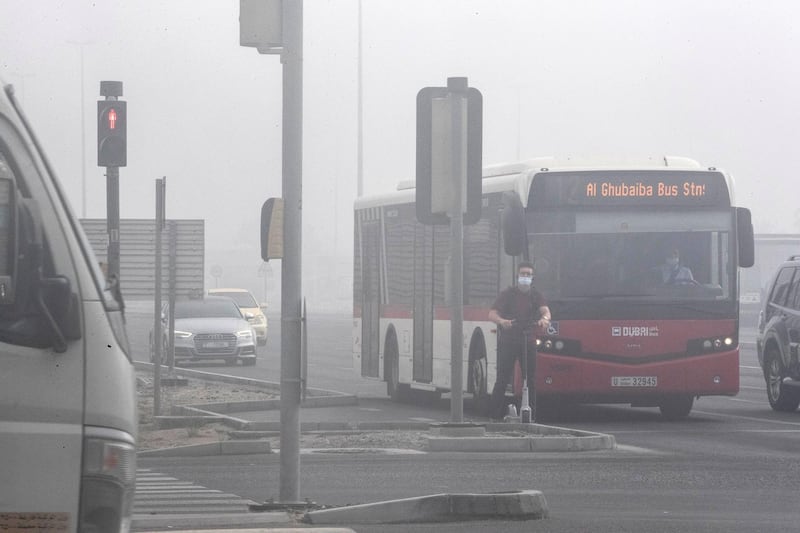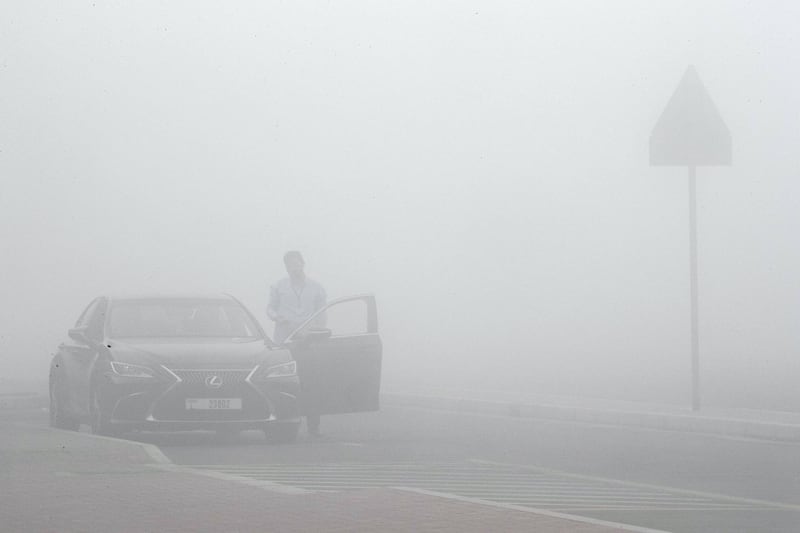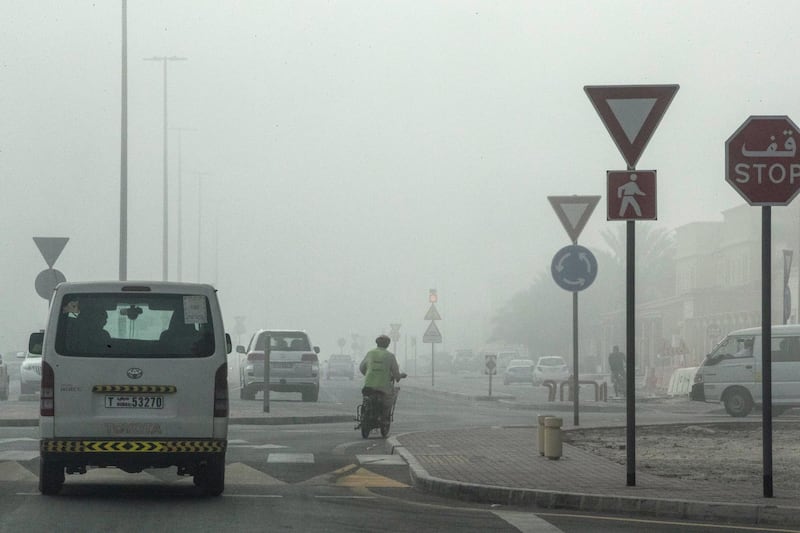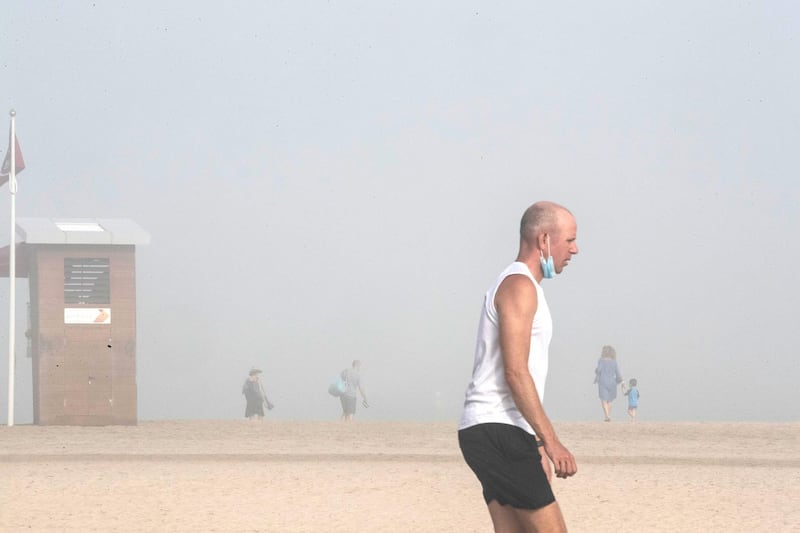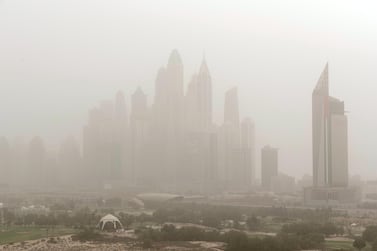Latest: Speed limit reduced on UAE motorways as fog returns
It is that time of year again.
After a long hot summer the temperature has finally started to fall a little.
The change also brings frequent fog, which envelopes skyscrapers on the coast as well as sand dunes deep in the desert.
But why, and how, does fog form in the arid climate of the UAE, where the annual rainfall is so low?
The National explains.
What is fog?
Technically, it is a visible aerosol of minuscule water droplets – sort of like a cloud on, or just above, the ground.
It needs certain conditions to form, such as calm winds and a clear atmosphere, which are more common at this time of the year as the seasons change.
There also needs to be dust or sand in the air, because water vapour condenses around the particles – which also explains why the UAE experiences so many foggy episodes.
The country has averaged 132 days of fog formation a year since records began in 2006, with the longest stretch recorded in 2010, when there were 17 days of fog and five days of mist in January.
Fog season does not usually begin until mid-December and runs until the end of March, aided by clear skies and calm conditions.
The sun usually burns it off by 9am, unless it is thick, in which case it has been known to hang around until almost midday.
What kind of fog develops in the UAE?
About 95 per cent of the fog in the UAE is radiation fog, which forms in the early hours as heat absorbed by the Earth's surface during the day radiates into the air, causing water droplets to form. It dissipates in the heat of the sun.
Advection fog is another type seen in the UAE. It forms when warm, moist air passes over a cool surface, creating water vapour.
Both types of fog can result in extremely dangerous driving conditions, such as in February 2018, when a lorry ploughed into a line of traffic in thick fog. In total, 44 vehicles were involved in the pile-up on the E311 road between Abu Dhabi and Dubai.
In 2011, one person died and dozens were injured in a pile-up involving 127 vehicles on the Abu Dhabi-Dubai motorway during thick fog.
Police issue warnings to motorists to inform them of the dangers of driving in fog, reducing the speed limits on motorways if it is particularly dense.
